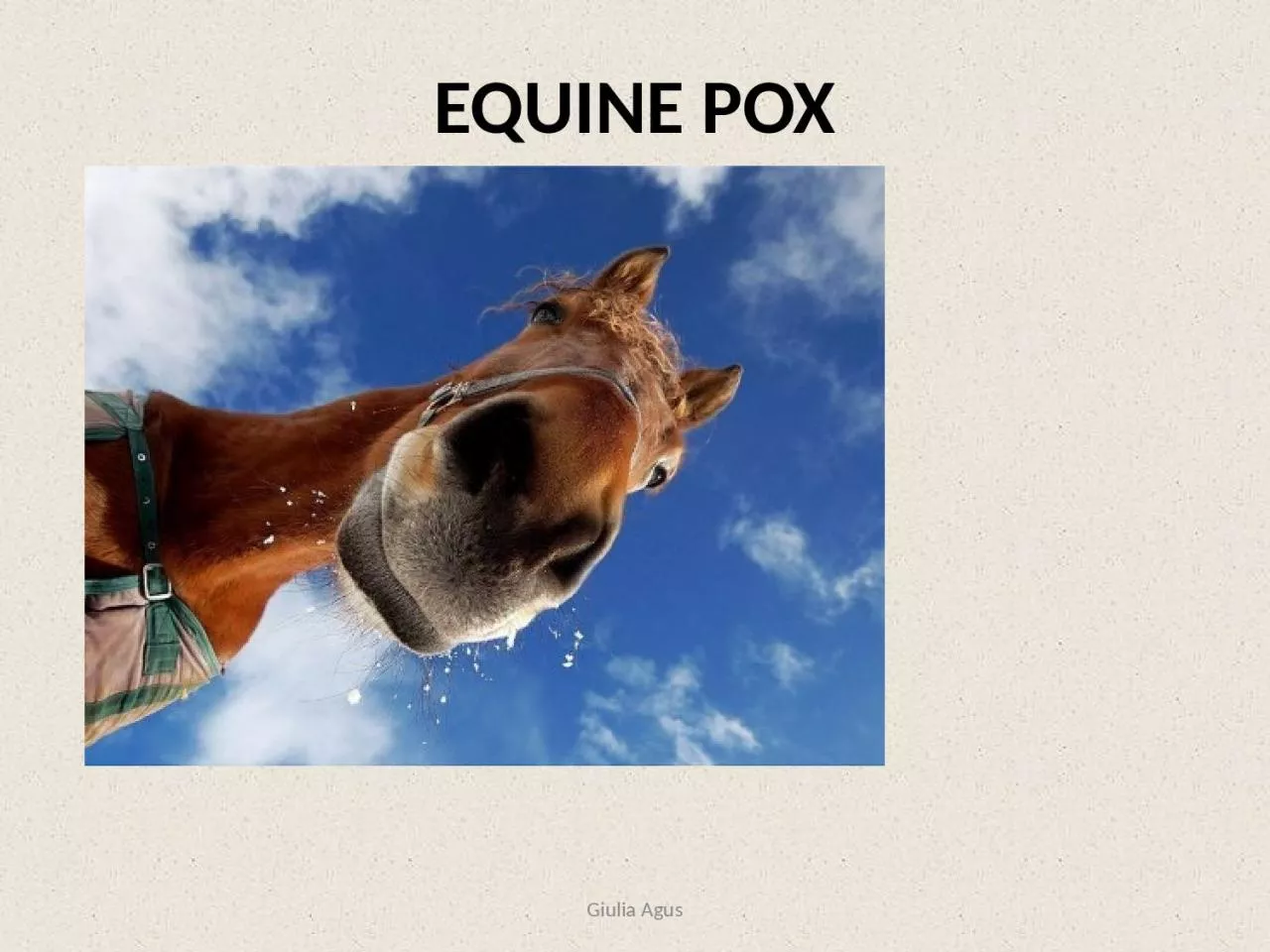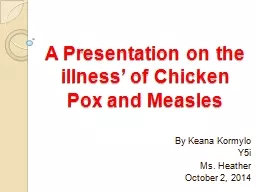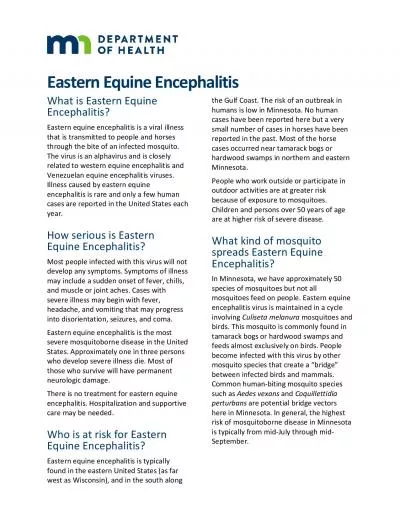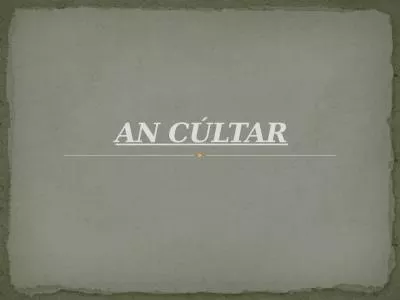PPT-EQUINE POX Giulia Agus EQUINE POX
Author : brown | Published Date : 2022-07-01
Also Known As Equine Coital Exanthema ECE Genital Horsepox Equine Venereal Balanitis Giulia Agus Introduction Equine coital exanthema is caused by a specific
Presentation Embed Code
Download Presentation
Download Presentation The PPT/PDF document "EQUINE POX Giulia Agus EQUINE POX" is the property of its rightful owner. Permission is granted to download and print the materials on this website for personal, non-commercial use only, and to display it on your personal computer provided you do not modify the materials and that you retain all copyright notices contained in the materials. By downloading content from our website, you accept the terms of this agreement.
EQUINE POX Giulia Agus EQUINE POX: Transcript
Download Rules Of Document
"EQUINE POX Giulia Agus EQUINE POX"The content belongs to its owner. You may download and print it for personal use, without modification, and keep all copyright notices. By downloading, you agree to these terms.
Related Documents














